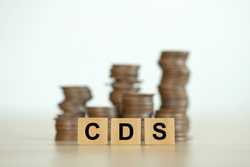Cashier's Check vs. Money Order: What to Choose

Our evaluations and opinions are not influenced by our advertising relationships, but we may earn a commission from our partners’ links. This content is created by TIME Stamped, under TIME’s direction and produced in accordance with TIME’s editorial guidelines and overseen by TIME’s editorial staff. Learn more about it.
Both cashier's checks and money orders are useful ways to make a large payment if you don't have a checking account and want a payment method that's more secure than cash. Although they share plenty of similarities, there are distinct differences between the two. These can include different maximum amounts, purchase cost, and which institutions issue them.
Here's how each works and when to choose one over the other.
A cashier's check is a type of check that is issued by your bank or credit union. Unlike a personal check, the money will be first taken out of your account and held by the bank until the cashier's check is cashed by the recipient. In most cases, you will need to have an account with a bank or credit union to be able to request a cashier's check. Some financial institutions allow non-customers to purchase cashier’s checks, though the fee may be higher than if you had an account there.
Depending on the financial institution, you can either order a cashier’s check online or in person at a local branch. Information you’ll need to provide includes the recipient’s name and the payment amount.
While in many cases you can request a cashier’s check for high amounts, your bank or credit union may impose limits. There may be fees associated with issuing cashier’s checks, though not always. Chase, for example, doesn’t charge fees for cashier’s checks if you have certain types of checking accounts with the bank.
A money order is similar to a personal check, except that the money is “guaranteed” since you have to buy it. In other words, a money order can’t bounce like a check. You can purchase a money order at your bank, credit union, post office, some retailers such as grocery stores, and check-cashing facilities. The fee you’ll be charged depends on the retailer. Typically, you can only purchase a money order up to $1,000 and will need to pay for one in cash or with your debit card.
A money order doesn’t have the recipient’s name explicitly on it, so it’s best to write it in the appropriate section as soon as you purchase it. Otherwise, anyone who has the money order can cash it.
The money order should also have a receipt (typically attached to the money order itself) that has its identification or serial number. Remove the receipt and keep it with your records in case your money order is lost or stolen. You can use the information to contact the place where you purchased the money order to request a replacement if it hasn’t already been cashed.
| Cashier’s check | Money order | |
|---|---|---|
Costs | At least $10, though some banks may not charge a fee depending on your banking relationship. | Typically $1 to $2, depending on the payment amount. |
Ease of purchase | Will need to purchase through the bank. | More convenient; can be purchased at a variety of financial institutions, the post office, and certain retailers and grocery stores. |
Safety | Considered safer than a money order since it’s linked to a bank account. | Safer than cash and personal checks. |
Issuer | Requires a bank account at your financial institution to purchase. | Can purchase at many financial institutions, grocery stores, post offices, and participating retailers. Doesn’t require a bank account. |
Purchase amount | Generally no limit unless the bank sets one. | Up to $1,000. |
One of the main advantages of a cashier’s check is that you can use it to make larger purchases. This form of payment generally doesn’t have a limit, as long as you have the amount in your bank account at the time of purchase. Even if your bank has a limit, it’s most likely higher than the $1,000 limit for money orders.
Cashier’s checks are also viewed as safer than a money order. Since the bank issues the check, it guarantees the payment. Plus, a cashier’s check needs to have a recipient’s name and only that person or entity can cash it. If a cashier’s check is lost or stolen, you can easily ask for a replacement.
Though cashier’s checks can be convenient, they generally cost more than money orders. As long as you don’t need a payment amount of more than $1,000, money orders are usually cheaper. In most cases, you won’t pay more than a few dollars to purchase one.
Money orders are also a more convenient option since you don’t need to have a checking account to purchase one. In fact, in addition to banks, you can purchase money orders from the post office and at retailers such as check-cashing outlets, money-remittance companies, and even at your local grocery store.
A cashier’s check is your best bet if you want to make a large payment where a credit card or personal check isn’t accepted. For example, you can use a cashier’s check to make a down payment on your home since it’s most likely going to be more than $1,000.
A money order is more economical when making smaller purchases. Plus, it’s best for those who may not have access to a checking account or can’t get to their local branch easily. Since you have more options as to where you can purchase a money order,it’s more convenient.
Cashier’s checks and money orders are both secure forms of payment. The money is held upfront, guaranteeing that the payment is available when the recipient cashes it. Which one you ultimately choose will depend on factors such as your payment amount, fees you’re willing to pay, and whether you have a checking account.
You can typically only purchase a money order for up to $1,000.
How can I verify that a cashier's check isn't fraudulent?
To verify whether a cashier’s check is genuine, contact the issuing bank or credit union. Make sure to do your own search and not rely on the information on the check itself. The institution should be able to help you verify whether the cashier’s check is genuine.
How can I cancel a cashier's check?
To cancel a cashier's check, notify your financial institution as soon as possible. You may be asked to fill out a form or some type of official request. Some financial institutions may charge you a fee to cancel a cashier's check.
The information presented here is created by TIME Stamped and overseen by TIME editorial staff. To learn more, see our About Us page.



